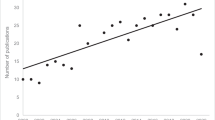Abstract
Quantifying the impacts of agroforestry systems (AFS) on habitat conservation remains a challenge due to difficulties in accounting for differences in scales, AFS configurations, and inadequate measures of species dynamics within practical time frames. The field of soundscape ecology offers new perspectives and tools to efficiently collect information on species richness and has a potential to be used as a holistic measure for indicating changes in habitat conditions. The objective of this investigation was to conduct a rapid soundscape assessment using low-cost technology and evaluate the efficacy of using sounds as an indicator for monitoring and assessing species richness within AFS. A series of low-cost recorders were placed within two AFS (pecan alley crop and silvopasture) and two control habitats (natural forest and soybean monoculture). The acoustic complexity index (ACI) was used as the metric to quantify the sonic environment. Results indicated a weak, but significant relationship (R2 = 0.30) between the ACI and overall structural complexity, measured using median heights, across different land-use systems. There was a stronger relationship (R2 = 0.53) between the ACI metric and soundscape composition, which was defined by overall species richness. This study demonstrated the usefulness of conducting a rapid, low-cost soundscape analysis that quantified the effects of different land-use systems on species richness. This research also helped provide evidence of the significance of AFS as an integrative land-use system with beneficial characteristics that have potential to promote both production and ecological conservation.







Similar content being viewed by others
Abbreviations
- ACI:
-
Acoustic complexity index
- AFS:
-
Agroforestry system
- LCR:
-
Low-cost recorder
References
Bardhan S, Jose S (2012) The potential for floodplains to sustain biomass feedstock production systems. Biofuels 3:575–588
Bardhan S, Jose S, Biswas S, Kabir K (2012) Homegarden agroforests as intermediary for biodiversity conservation in Bangladesh. Agrofor Syst 85:29–34
Bormpoudakis D, Sueur J, Pantis JD (2013) Spatial heterogeneity of ambient sound at the habitat type level: ecological implications and applications. Landsc Ecol 28:495–506
Brumm H, Slabbekoorn H (2005) Acoustic communication in noise. Adv Study Behav 35:151–209
Dale VH, Beyeler SC (2001) Challenges in the development and use of ecological indicators. Ecol Indic 1:3–10
Farina A, Belgrano A (2006) The eco-field hypothesis: toward a cognitive landscape. Landsc Ecol 21:5–17
Farina A (2011) Landscape ecology and the general theory of resources: comparing two paradigms. J Landsc Ecol 4:18–29
Farina A, Lattanzi E, Piccioli L, Pieretti N (2012) SoundscapeMeter. Bioacoustic Software. DISBEF, Urbino University
Farina A, Pieretti N (2012) The soundscape ecology: a new frontier of landcape research and its application to islands and coastal systems. J Mar Island Cult 1:21–26
Farina A (2014) Soundscape ecology: principles, patterns, methods and applications. Springer Science, Dordrecht
Farina A, James P, Bobryk C, Pieretti N, Lattanzi E, McWilliam J (2014) Low cost (audio) recording (LCR) for advancing soundscape ecology towards the conservation of sonic complexity and biodiversity in natural and urban landscapes. Urban Ecosyst 17:923–944
Francis CD, Paritsis J, Ortega CP, Cruz A (2011) Landscape patterns of avian habitat use and nest success are affected by chronic gas well compressor noise. Landsc Ecol 26:1269–1280
Gasc A, Sueur J, Jiguet F, Devictor V, Grandcolas P, Burrow C, Depraetere M, Pavoine S (2013) Assessing biodiversity with sound: Do acoustic diversity indices reflect phylogenetic and functional diversities of bird communities? Ecol Indic 25:279–287
Gross K, Cardinale BJ, Fox JW, Gonzalez A, Loreau M, Polley HW, Reich PB, van Ruijven J (2014) Species richness and the temporal stability of biomass production: a new analysis of recent biodiversity experiments. Am Nat 183:1–12
Habib L, Bayne EM, Boutin S (2007) Chronic industrial noise affects pairing success and age structure of ovenbirds Seiurus aurocapilla. J Appl Ecol 44:176–184
James FC, Shugart HH (1970) A quantitative method of habitat description. Audubon Field Notes 24:727–736
Jose S (2009) Agroforestry for ecosystem services and environmental benefits: an overview. Agrofor Syst 76:1–10
Jose S (2012) Agroforestry for conserving and enhancing biodiversity. Agrofor Syst 85:1–8
Krause BL (1987) Bioacoustics, habitat ambience in ecological balance. Whole Earth Rev 57:14–18
Krause BL, Gage SH, Joo W (2011) Measuring and interpreting the temporal variability in the soundcape at four places in Sequoia National Park. Landsc Ecol 26:1247–1256
Kroodsma DE, Miller EH, Ouellet H (eds) (1982) Acoustic communication in birds. Academic Press, New York
La Rosa D, Barbarossa L, Privitera R, Martinico F (2014) Agriculture and the city: a method for sustainable planning of new forms of agriculture in urban contexts. Land Use Policy 41:290–303
Lassoie JP, Buck LE, Current D (2009) The development of agroforestry as an integrated land use management strategy. In: Garrett G (ed) North American agroforestry: an integrated science and practice. American Society of Agronomy Inc., Madison, WI
Lichtfouse E (ed) (2010) Biodiversity, biofuels, agroforestry and conservation agriculture. Springer, New York
Long AJ, Nair PKR (1999) Trees outside forests: agro-, community, and urban forestry. New Forest 17:145–174
Matson PA, Parton WJ, Power AG, Swift MJ (1997) Agricultural intensification and ecosystem properties. Science 277:504–509
McNeely JA, Schroth G (2006) Agroforestry and biodiversity conservation–traditional practices, present dynamics, and lessons for the future. Biodivers Conserv 15:549–554
Millspaugh JJ, Schultz JH, Mong TW, Burhans D, Walter WD, Bredesen R, Pritchert RD Jr, Dey DC (2009) Agroforestry wildlife benefits. In: Garrett HE (ed) North American Agroforestry: an integrated science and practice. American Society of Agronomy Inc., Madison, WI
Pekin BK, Jung J, Villanueva-Rivera LJ, Pijanowski BC, Ahumada JA (2012) Modeling acoustic diversity using soundscape recordings and LIDAR-derived metrics of vertical forest structure in a neotropical rainforest. Landsc Ecol 27:1513–1522
Pieretti N, Farina A, Morri D (2011) A new methodology to infer the singing activity of an avian community: the acoustic complexity index (ACI). Ecol Indic 11:868–873
Pijanowski BC, Farina A, Gage SH, Dumyahn SL, Krause BL (2011a) What is soundscape ecology? An introduction and overview of an emerging new science. Lands Ecol 26:1213–1232
Pijanowski BC, Villanueva-Rivera LJ, Dumyahn SL, Farina A, Krause BL, Napoletano BM, Gage SH, Pieretti N (2011b) Soundscape ecology: the science of sound in the landscape. Bioscience 61:203–216
Quinn JE, Oden A, Brandle JR (2013) The influence of different cover types on American Robin nest success in organic agroecosystems. Sustainability 5:3502–3512
R Core Development Team (2011) R: a language and environment for statistical computing. R Foundation for Statistical Computing, Vienna
Schroth G, da Fonseca GAB, Harvey CA, Gascon C, Vasconcelos HL, Izac A-MN (eds) (2004) Agroforestry and biodiversity conservation in tropical landscapes. Island Press, Washington, DC
Slabbekoorn H, Peet M (2003) Ecology: birds sing at a higher pitch in urban noise—great tits hit the high notes to ensure that their mating calls are heard above the city’s din. Nature 424:267
Smallbone LT, Matthews A, Lunt ID (2014) Regrowth provides complementary habitat for woodland birds of conservation concern in a regenerating agricultural landscape. Landsc Urban Plan 124:43–52
Stone E (2000) Separating the noise from the noise: a finding in support of the ‘Niche Hypothesis’, that birds are influenced by human-induced noise in natural habitats. Anthrozoös 13:225–231
Taylor PD, Fahrig L, Henein K, Gray M (1993) Connectivity is a vital element of landscape structure. Oikos 68:571–573
Tilman D, Cassman KG, Matson PA, Naylor R, Polasky S (2002) Agricultural sustainability and intensive production practices. Nature 418:671–677
Tscharntke T, Klein AM, Kruess A, Steffan-Dewenter I, Thies C (2005) Landscape perspectives on agricultural intensification and biodiversity—ecosystem service management. Ecol Lett 8:857–874
Verchot LV, Van Noordwijk M, Kandji S, Tomich T, Ong C, Albrecht A, Mackensen J, Bantilan C, Anupama KV, Palm C (2007) Climate change: linking adaptation and mitigation through agroforestry. Mitig Adapt Strateg Glob Chang 12:901–918
Wiley RH, Richards DG (eds) (1998) Adaptations for acoustic communication in birds: sound transmission and signal detection. Academic Press, New York
Acknowledgments
We would like to thank the Dorris D. and Christine M. Brown Fellowship offered by the College of Agriculture, Food, and Natural Resources at the University of Missouri, and The Center for Agroforestry at the University of Missouri for partially funding this project.
Author information
Authors and Affiliations
Corresponding author
Rights and permissions
About this article
Cite this article
Bobryk, C.W., Rega-Brodsky, C.C., Bardhan, S. et al. A rapid soundscape analysis to quantify conservation benefits of temperate agroforestry systems using low-cost technology. Agroforest Syst 90, 997–1008 (2016). https://doi.org/10.1007/s10457-015-9879-6
Received:
Accepted:
Published:
Issue Date:
DOI: https://doi.org/10.1007/s10457-015-9879-6




